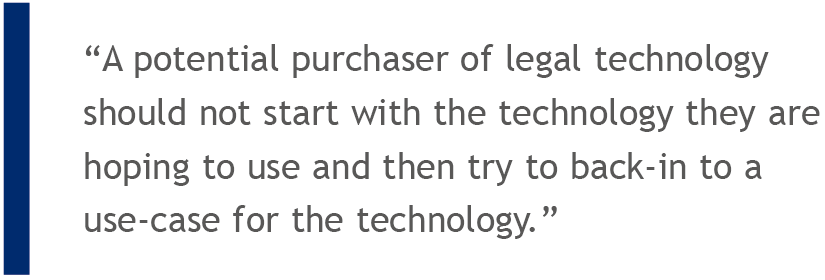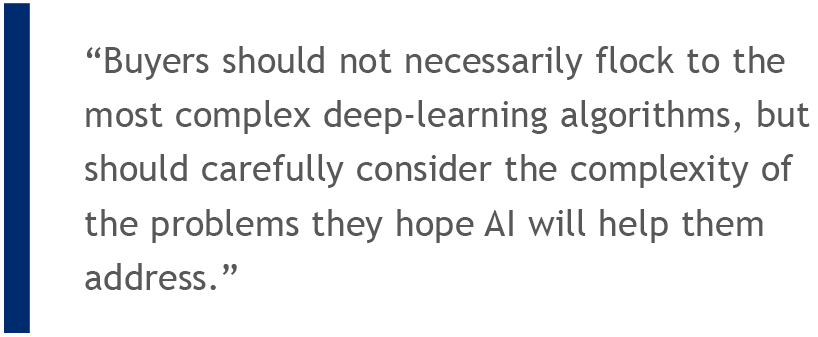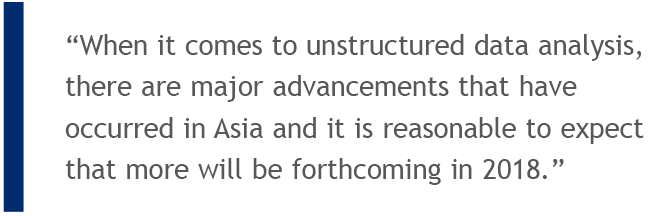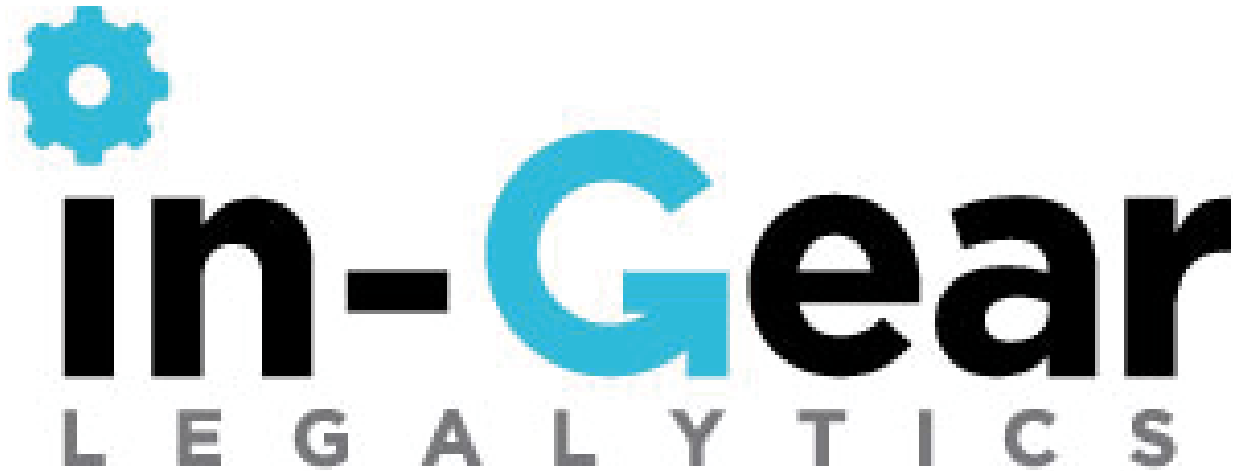
By Bill Novomisle, co-founder and chief design officer,
Starting with the idea of incorporating artificial intelligence into the legal team might be the wrong approach.
Artificial intelligence (AI) is changing the face of global legal practice and will continue to do so for the foreseeable future. Although there has been extensive coverage of AI in legal applications in North America and Europe, significantly less attention has been given to the unique challenges and opportunities for this technology in Asia. Within the Asian market there is a lot of confusion regarding what AI actually can do, how it works, and what opportunities may exist for adopting AI within legal departments in this region.
Perhaps the greatest source of confusion comes from asking the wrong question. Too often, users ask: “How can I use AI in my legal department?” A potential purchaser of legal technology should not start with the technology they are hoping to use and then try to back-in to a use-case for the technology. Rather, they must understand the problem they are hoping to solve first and foremost. Once a use-case has been identified, including a clear vision of what “success” looks like and the role that technology can play in the path to success, then technology can be evaluated to see if it is the correct fix for the problem at hand. Nevertheless, the topic of artificial intelligence comes up regularly as a starting point (rather than end-point) for a discussion about how the practice of corporate law is changing. Despite the tremendous amount of talk surrounding AI, many lawyers do not actually understand how this technology works nor are they aware of specific pitfalls that apply across numerous Asian jurisdictions to the adoption of AI-powered tools.
Purchasing legal technology is a significant undertaking, both in terms of time and money. The goal of this article is to give readers a better appreciation of how the tools they are considering adopting actually work as well as increasing their sophistication as consumers of legal technology. Input from legal leadership, practitioners at all levels, and IT resources, are all necessary to the successful selection and implementation of legal technology. Experience in this area is invaluable and irreplaceable. Resources are available that have experience in selecting and implementing these tools that also bring practical experience in delivering legal services to drive business strategies and legal operations. For this reason, at a minimum, a potential purchaser is advised to speak to others who have already implemented the technology under consideration and ensure they have adequate internal resources to fully manage the project’s implementation.
One source of confusion when discussing AI comes from the different types of technologies that all fall under the broader umbrella of AI. As an introduction to some of the types of technology that can be described as AI, the three forms of AI that have been meaningfully applied in legal practice are explained below. In practice, these three forms are not mutually exclusive, and indeed most AI tools incorporate at least two of the below forms in practice. Nevertheless, by dividing the technology into these three categories, a basic understanding starts to emerge regarding how AI works in the law.
Deep learning
Perhaps the aspect of AI that causes the greatest amount of excitement and fear is the idea that this technology has the ability to “learn”. Rather than a static system that takes predictable inputs to produce consistent outputs, AI has the ability to get better over time. As the AI algorithm encounters more and more situations it has the ability to adapt itself to those previously unexplored inputs. Most lawyers, however, do not understand what deep learning is or how it works.
The first concept to understand with deep learning is the idea of “layers” of learning. Layers refer to the complexity of the relationship between variables. To use a mathematical example, imagine that you are trying to teach a single-layer deep learning algorithm to recognise the relationship y=2x. You throw a bunch of numbers at the machine, and then “teach” the algorithm by telling it when the rule is satisfied (for example, when y=4 and x=2). You also would have to teach the machine when the rule is not satisfied (for example, when y=10 and x=1). Eventually, after being trained with enough examples, the machine would identify the relationship between x and y and would be able to both predict situations when the rule was satisfied (for example, if you told the machine that x=7.5 it could predict that y=15) and situations when the rule would not be satisfied (for example, it would predict that x=7.5 and y=14 would fail the rule).
 It is fairly clear that a single-layer deep learning algorithm has no practical worth in legal practice. Consider a document or diligence exercise that was focused on a transaction called Project Prometheus. A basic search can simply scan through electronically stored information and quickly and easily match the search term “Project Prometheus” to all documents containing those words. However, if a practitioner wanted to use a single-layer deep learning algorithm to perform that same search, she would have to manually train the algorithm to identify positive and negative hits. Given that non-AI search technology can do that same task near-instantly and with no human intervention, single layer deep learning AI is obviously the wrong tool for the job. This is why single-layer deep learning does not exist as a practical matter.
It is fairly clear that a single-layer deep learning algorithm has no practical worth in legal practice. Consider a document or diligence exercise that was focused on a transaction called Project Prometheus. A basic search can simply scan through electronically stored information and quickly and easily match the search term “Project Prometheus” to all documents containing those words. However, if a practitioner wanted to use a single-layer deep learning algorithm to perform that same search, she would have to manually train the algorithm to identify positive and negative hits. Given that non-AI search technology can do that same task near-instantly and with no human intervention, single layer deep learning AI is obviously the wrong tool for the job. This is why single-layer deep learning does not exist as a practical matter.
However, as deep learning adds layers, its ability to recognise and adapt to patterns that have more complex relationships increases and begins to approximate human decision-making more closely. The time and number of examples needed to train the system also correspondingly increase. Because of the investment in time that is needed to train the system, the efficiency savings are only realised when seeking out “positive” hits in a data set with several hundreds of thousand documents. There, a diligence review could be completed in a matter of hours by a machine rather than in the matter of weeks or months that a manual review would require.
Note that this result is dependent on two factors. First, the number of layers that the deep-learning technology employs is a key limit of the capabilities of technology. Buyers should not necessarily flock to the most complex deep-learning algorithms, but should carefully consider the complexity of the problems they hope AI will help them address (now and in the future) and make sure that the solution is appropriately sized for the problem. Often, determining whether the solution is “right-sized” will require expertise in both law and technology — which may not always be available within a single individual, or even an organisation.
The second factor necessary for success is that the algorithm is given the appropriate amount of training. This critical step is easily overlooked by buyers of legal tech that are eager for an “out of the box” solution and is the first place that adoption of AI based legal technology tools across Asia deviates from markets in North America and Europe. Long-established technology companies with significant track records (eg, the amount of data that has passed through their machines) are able to claim for their products “out of the box” ability to do certain high-volume tasks. Today’s purchaser is able to take advantage of the years of training that the machine already has experienced.
However, the buyer of legal technology is cautioned here to make sure they check their tool of choice well before purchasing. The adoption and sale of AI tools in Asia has been fairly limited thus far. As experienced practitioners are well aware, local formatting and style of legal documents in Asian jurisdictions is often unique and particular to its jurisdiction — even if the language of the document is solely English. If the use-case under consideration is deeply localised, some scepticism is warranted. Make sure to insist on a test case demonstration performed at your offices, using your actual data. Take the time after the demo to independently verify the results of the machine’s work. You may find the accuracy is closer to 80 percent, which may be good enough with the understanding that you will be undertaking training yourself to bring the machine up to higher levels of accuracy. However, you will understand both the work necessary to improve the tool and the best way to implement the tool by doing your appropriate diligence.
Natural language processing
As its name implies, natural language processing (NLP) is a form of AI that is concerned with teaching machines to understand and even converse in natural human language. NLP is the technology that underlies smartphone and smart-home assistants (such as Siri and Alexa), as well as digital chat bot assistants found on many websites. In order for an NLP system to function effectively, the technology must be able to tackle four interrelated and overlapping aspects of linguistics: syntax, semantics, discourse, and speech. While anyone who has used Siri or Alexa will recognise that these systems are remarkably effective, particularly in spoken English, to apply NLP to Asian languages requires material adaption of both syntax and semantics (syntax is the breaking down of language, semantics is the aggregation of language into meaning).
Perhaps the greatest challenge for NLP applications in Asia lies in teaching computers to apply the correct morphology (a type of syntax) that converts native characters into words. Mandarin Chinese (to use the most commonly spoken language in East Asia), incorporates many out-of-vocabulary words such as proper names that pose a significant challenge for machines because unlike English and other Indo-European languages, there are no spaces between words/characters. For example, “Canada” is translated as 加拿大, which are the characters for “to add”, “to hold” and “big” respectively. This is borrowed from Cantonese, where the sound of the word — “Ganádà” — is a close approximation of the English word. Mandarin has in turn adopted the same characters for the name of the country, resulting in a word that is pronounced “Jianádà”. This type of out-of-vocabulary word poses translation challenges for NLP systems.
Semantics also poses a challenge in Asia. Semantics focuses on the relationship between the units of language and how they combine to form meaning. Semantics is a particular challenge to legal documents because the relationship between words is the entire key to the meaning of a law or regulation. To continue with Mandarin as an example, consider this sentence from the China Securities Regulatory Commission amendments to the Securities Issuance and Underwriting Decision Law (2014):
網下和網上投資者獲得配售後,應當按時足額繳付認購資金
This can be translated as: “After offline and online investors receive the placement, they should pay the subscribed-to funds on time and in full.” However, a semantic mistake made by a machine could confuse dependency of the clauses and translate this law as requiring the funds to pay the investors once placement is completed. This type of error turns the intent of the law on its head! Highly accurate semantic analysis of native language is absolutely essential before any reliance on AI-driven technology can be justified.
 Expert systems
Expert systems
Expert systems are some of the oldest forms of AI technology. Indeed, expert systems have become so commonplace many people do not recognise (or acknowledge) that many well-established business software products are AI-enhanced expert systems (eg, SAP, Siebel, Oracle). An expert system emulates the decision-making skills of a human. The technology uses two components: a knowledge base and an inference engine.
The knowledge base simply represents what the machine is told are the facts regarding the world. These can be laws, fact patterns or a combination of both. The inference engine is the automated reasoning system that takes the existing knowledge base and by applying its rules to the knowledge base, generate new knowledge. The system is highly adaptable, such that it can recognise when there is a change in the fact pattern and is able to immediately reapply the inference engine to determine any changes in output. The system can also handle hypothetical reasoning (eg, multiple parallel possibilities) as well as assigning probabilities to outcomes rather than rigid certainty to evaluate more complex decisions (fuzzy logic). The most recent development in expert systems allows the system to analyse data patterns for causal or dependency relationships. This in turn can be used to create predictive models and decision support systems.
In addition, an expert is agnostic to the input language that is used for its knowledge base and for the search query. For this reason, a buyer of an expert system has no regional-specific obstacles to overcome.
Opportunities for AI-powered legal technology in Asia
Before focusing on the marketplace in Asia, this discussion must shift from the types of technology employed to the type of solution the technology purports to offer. These are:
- Legal research aids
- Litigation prediction/strategy support
- Preventative law (monitoring)
- Unstructured data analysis (due diligence, contract analysis, document review)
In the current state of the market, not all of these above use-cases are likely immediate-term targets for AI-based tools (however, it is only a matter of time). Legal research tools targeted to private consumers has proven elusive for the most part. Within China, the Supreme People’s Court started using an AI-enabled legal research tool called FaXin to search for precedent and identify analogous decisions to help guide judges. With a Mandarin-only interface, Legal Miner is also offering AI-assisted legal research tools. Singapore saw the introduction of Intelllex to assist law students and junior lawyers with legal research tasks. Indian legal research tool CaseMine has achieved some success in offering both legal research and automation of basic tasks. To date, no litigation monitoring or prediction tool has been offered commercially in any Asian jurisdiction.
 When it comes to unstructured data analysis, there are major advancements that have occurred in Asia and it is reasonable to expect that more will be forthcoming in 2018. Axiom has introduced its Contracts Intelligence Platform, which is targeted to all aspects of the M&A process (buy side, sell side, and post-merger integration) which offers both streamlined clause extraction to aid in diligence, as well as advanced data visualisation to provide business intelligence regarding deal synergies and risks. It is well known that other companies have been examining similar technology (eg KorumLegal, Loom Analytics, Surukam) and more announcements may be forthcoming in 2018.
When it comes to unstructured data analysis, there are major advancements that have occurred in Asia and it is reasonable to expect that more will be forthcoming in 2018. Axiom has introduced its Contracts Intelligence Platform, which is targeted to all aspects of the M&A process (buy side, sell side, and post-merger integration) which offers both streamlined clause extraction to aid in diligence, as well as advanced data visualisation to provide business intelligence regarding deal synergies and risks. It is well known that other companies have been examining similar technology (eg KorumLegal, Loom Analytics, Surukam) and more announcements may be forthcoming in 2018.
In addition, Deloitte Legal has now introduced an NLP-driven tool to assist corporations with compliance across a myriad of Chinese regulations. This has the potential to be the leading edge of a new wave of NLP products that expand well beyond the English language tools that currently dominate the market. This is not a traditional legal research tool in the sense that a law firm lawyer would use, but it does allow a corporate client a technology assisted solution for compliance with a myriad of local, regional and state-level regulations that are prone to change rapidly and with little notice.
Beyond that, the usual list of global players (IBM, Microsoft, Kira, Luminance, Elevate, Seal, LawGeex, ContractPod, Ayfie, among others) continue to be open to opportunities for sales and development across the region. While most of these players offer out-of-the-box solutions that can be applied to large data sets, they have not specifically targeted the Asian region (in the sense of setting up a permanent sales/support force) to date. These players can also help create bespoke technology solutions, ranging from chat-bots to business intelligence dashboards for corporate clients.
There is one form of AI that does not seem to get much attention in Asia, but can be used to address the need for efficiency in many routine, high-volume requests and tasks. This is the use of custom designed expert systems. These systems (eg, Neota Logic) can be set up to handle complex but routine questions (such as those involving labour law, advertising and marketing restrictions, non-disclosure agreements, routine renewals for licensing or intellectual property, periodic financial closings, etc.) and can be programmed by a lawyer without technical or coding skills. For a corporate client looking to create a self-service tool for high-volume, routine legal questions, this has tremendous potential for efficiency gains while still maintaining visibility and control over the process.
The key for any potential purchaser of legal technology is to start with the problem — not the solution. For organisations that have been specifically mandated to start incorporating AI into the legal work they perform, there are current opportunities and there will likely be even more in the near future. None of the pitfalls described in this article are insurmountable, nor should a potential purchaser be deterred from taking the leap into the future of law. They should merely do so with eyes wide open, and with the most sophisticated understanding of their undertaking as possible. There is no time like the present to become part of the future.















